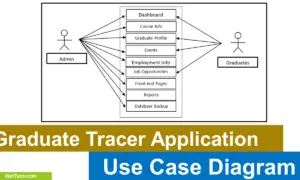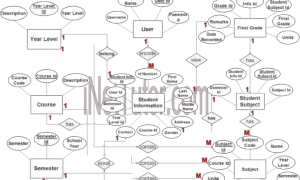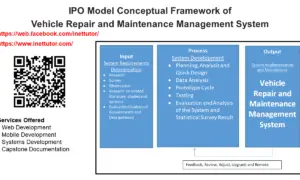IPO Model Conceptual Framework of Webinar Course Management System
This post presents the Conceptual Framework of the Webinar Course Management System which is based on IPO model.
About the Project
The usage of technology has introduced new innovative ways to connect for learning. One of these is the webinar. Webinars are online video seminars or video conferencing that educate individuals on a specific course or topic. The capstone project, entitled “Webinar Course Management System,” is designed to automate webinar course management. This is a centralized platform where aspiring attendees can browse for scheduled webinars wherein they can join.
The most common scenario for webinars is that members will only wait for the meeting link to be provided by the facilitators of the upcoming webinars. The members will rely on the facilitators about the details of the webinars, which is not highly ideal for updates will not be highly available and accessible. There is a need for an upgraded system of webinar management that is reliable by facilitators to manage the details of the webinar, and by the members wherein they can access up-to-date information of the webinar.
Objectives of the Study
- To let facilitators of the webinars electronically manage webinar course information.
- To allow centralized electronic dissemination of the webinar updates.
- To let members easily browse for scheduled webinars they can join in.
- To digitally transform webinar course management processes.
Conceptual Framework/Model
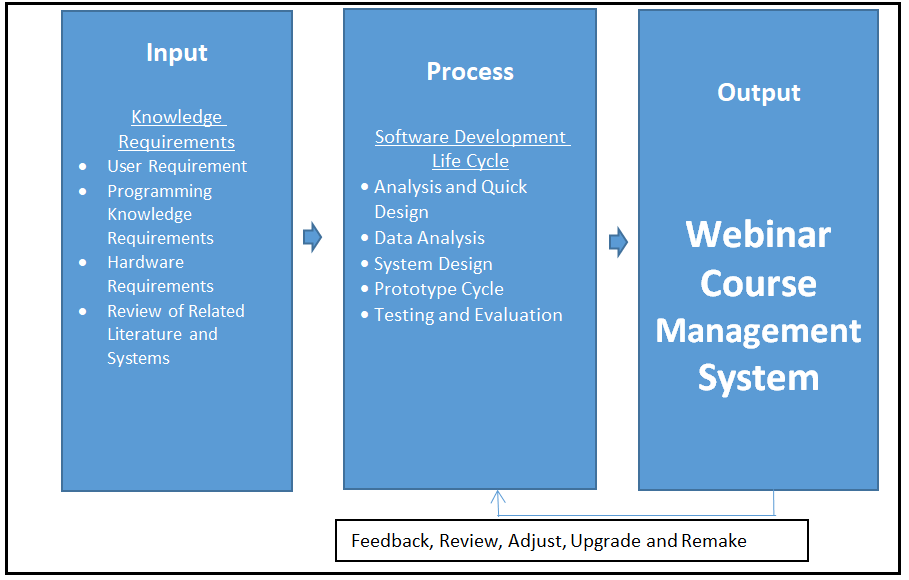
The image above is the conceptual framework of the project entitled Webinar Course Management System. It is based on IPO model or also known as the input, process and output model.
Input
The input phase or the knowledge requirement stage consists of the following:
- User Requirement – the researchers conducted an interview with Educational institutions to identify their needs so that the team can develop the appropriate system that will answer their existing concerns.
- Programming Knowledge – after determining the problems, a solution must be provided and that solution is in a form of information system that will be written in the programming language where the researchers has and adequate knowledge.
- Hardware Requirements – the system cannot work alone without the hardware such as the computer and mobile devices. The researchers had explained it to the farmers that they need that hardware to fully utilize the farm management system.
- Related Literature and Systems – the researchers conducted a research on the different literatures and related systems to serve as a guide in the development of the Webinar Course Management System.
Process
Analysis and Quick Design
During Analysis and Quick Design, the researchers did a personal interview with the respondents and the chosen client where the study was conducted. The respondents were given the chance to suggest how the system will be designed. After conducting the data gathering, the researchers made an initial design for the proposed system.
Data Analysis
The researchers will analyze all the data, user requirements and information. This phase also help the researchers to have an idea on how to create the system and have an idea on how the proposed system would be beneficial to the clients.

System Design
The researchers will start to develop the proposed system. It includes the design; how the system would look like based on user requirements, and the researchers/programmer would like to add personal design to make the system more interactive and user friendly.
Prototype Cycle
This stage will include the compiling, building, demonstration also refinement of the data gathered by the researchers. The researchers first build a prototype based on the planed design and data tables. After building the prototype it will be demonstrated to the client. The researchers show the function of the system, the flow on how it works, and the functions of the features that are included in the system. The last stage is refinement where in the researchers will refine the system by client’s additional needs. This will include changes in features flow and functions based on the requirements.
Testing and Evaluation
This will include the feed backing of the proposed system after it will be implemented and had undergone testing by three Experts. It will also inform the researchers and the developer if there are any bugs, suggestion and if the system’s functionality will works well.
This will discuss the implementation of the propose system wherein Three (3) Experts will evaluate the propose system. This will also discuss if the recommended functions and suggestion are met.
Output
The study’s ultimate outcome is a database-driven information system that will replace or assist respondents in undertaking webinar course management. The system’s implementation is strongly encouraged.
This webinar course management system (WCMS) is designed to help instructors manage their online courses. It provides a variety of tools to help instructors create and manage their courses, including:
– A course calendar
– A course syllabus builder
– A course materials repository
– A discussion forum
– A gradebook
Webinar Management System is a web-based platform for managing live and on-demand webinars. It provides a centralized location for managing all aspects of webinars, from creating events and inviting attendees to managing recordings and follow-up communications.
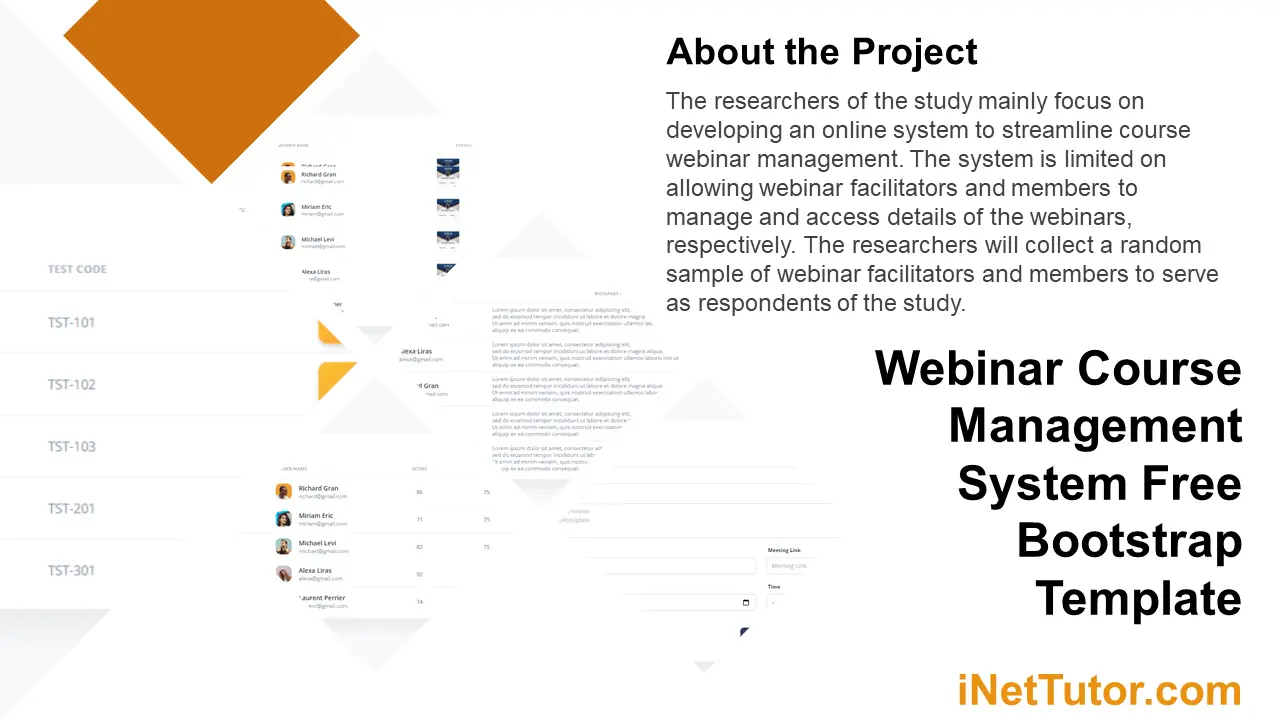
Summary
This article discusses the conceptual structure of the Webinar Course Management System, which is based on the input, process, and output (IPO) paradigm. Researchers must develop user criteria, programming knowledge requirements, hardware requirements, and an evaluation of related literature and systems during the input phase. Throughout the project, the researchers will employ the Software Development Life Cycle Technique. The study’s ultimate goal is to create a database-driven information system that will replace or aid respondents in managing webinar courses. The implementation of the system is highly recommended.
You may visit our Facebook page for more information, inquiries, and comments. Please subscribe also to our YouTube Channel to receive free capstone projects resources and computer programming tutorials.
Hire our team to do the project.
Related Links and Articles:
Webinar Course Management System Free Bootstrap Template
Quiz Master in Flutter Free Download Source code
Exam Management System Free Bootstrap Source code
